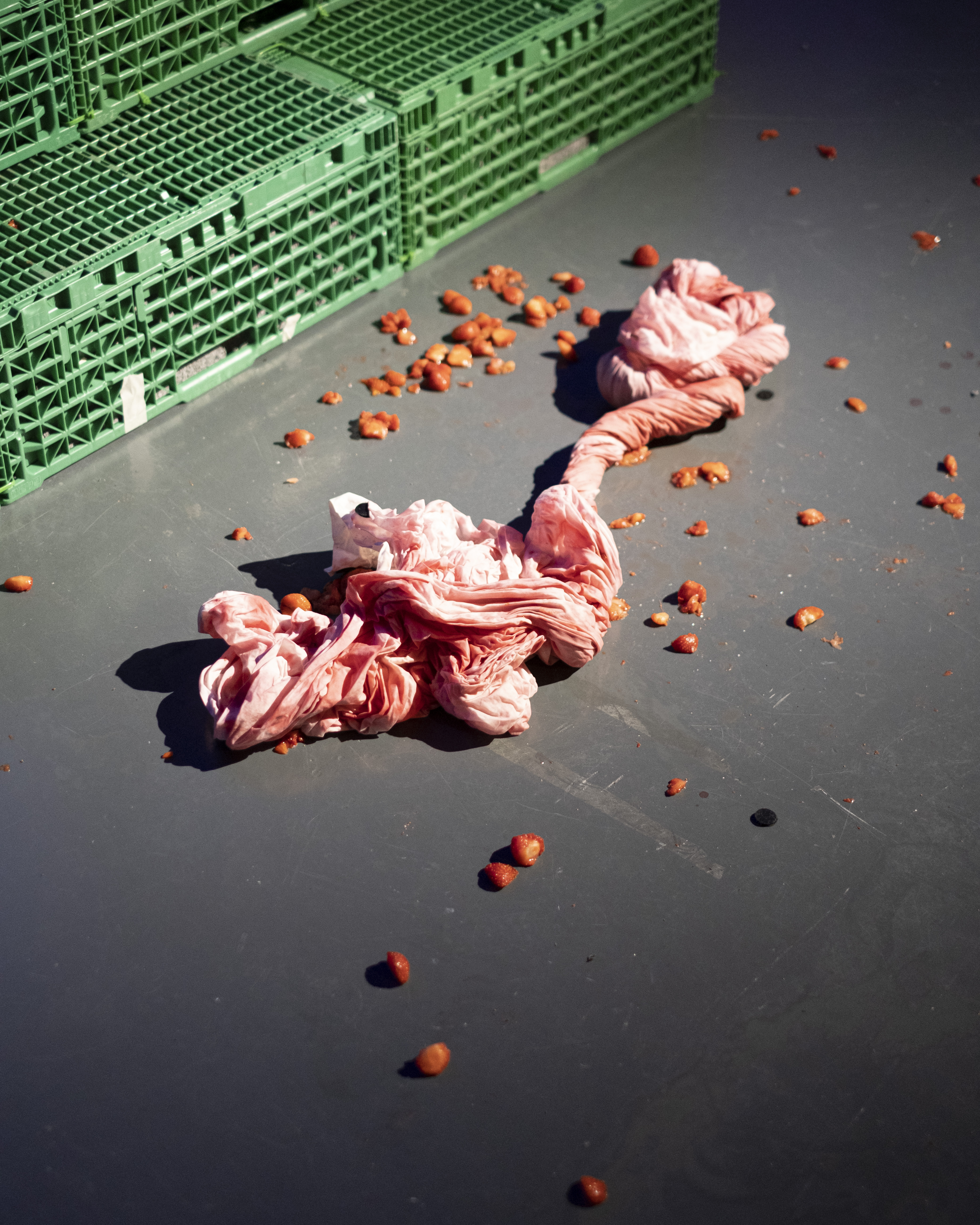In reference to the important questions posed by Gloria Anzaldua, the performance brought together sound, text, choreography and careful scenography. With great intentionality and reflection, the performance deployed several elements of translation in the multiple sense of the word: the translation of contexts, (intellectual) histories, bodies, languages and forms. Translation as a means of relating as well as of tension.
Two bodies attached to each other, forming a third space, a frontera through their attachment. Through texts in Spanish, Mapudungún and English, the performers embody the complex figure of the indias-intérprete, which walk on strawberries, which become blood that they lick.
The performance could be received as a historical reenactment, as the past, as the ancestors made present, or as a ritual seeking to take care of the past, as an intervention through time and space that would take care of the many losses triggered by colonial violence, but also of the many victories, tricks, tactics, infrapolitics of the colonized. Both subjects licked the wounds of the past and present. These wounds are physical, psychological and cultural. They told us the story of a bad trans-formation as a mode of resistance.
♥ ❤ ❥ ❣ ❦ ❧ ❦ ❣ ❥ ❤ ♥
Credits
Conception, création, textes et performance: Cecilia Moya Rivera. Performers: Cecilia Moya Rivera, Valeska Romero Curiqueo. Création sonore: Esfandiar Aminian and Cecilia Moya Rivera. Conseillerxs en écritures: Jonas Van et Mauricio Adasme.
2022, festival état de lieu, Lausanne, CH.
Photos @Pauline Humbert


